Six types of martial arts to choose from are karate, aikido, hapkido, krav maga, capoeira, and ninjutsu forms. Glance through this guide to get a solid understanding of these 6 forms of martial arts.
Have you ever been tempted to try out martial arts when you were a kid? Perhaps you were a big Jackie Chan fan? Or, you may have watched popular movies like Karate Kid (I mean, who could forget “wax on, wax off”!)?
I thrived in my world of dance but a part of me always wondered whether I would have enjoyed martial arts.
And that got me thinking. Is it too late to start taking martial arts classes now? Well, I’ve found the answer to be a resounding “no!”
Quick & Easy: Did you know you can browse the best deals on Martial Arts classes in Australia here on Avaana?
A great way to learn self-defense, boost your confidence, and improve discipline is to practice martial arts. Plus, it’s a healthy, well-rounded source of high impact exercise that you can enjoy in a social setting.
If you’re anything like me you might have wondered what the best class will be for you to take at this stage in your life. In which case, the two most important questions to consider are:
- What skills can each martial art teach you?
- What are the most demanding martial arts to pick up?
With these questions in mind, let’s take a look at some of these disciplines to help you make a more informed decision about the best martial arts to trial.
Types of Martial Arts to Choose From
1. Karate

Karate (kara-te) is likely to have touched your life in one way or another.
Either someone you know has done it, kid next-door is taking classes, or karate movies have intrigued you to learn more about this martial art.
So, it comes as no surprise that karate is so popular it even became an Olympic sport. Without a doubt, it’s one of, if not the most popular form of martial arts.
Karate originated in Okinawa, Japan thousands of years ago, but the current form only dates back around 200 years.
Interestingly, karate translates to ’empty hands.’ This alludes to the act of blocking and striking opponents without the use of weapons.
Hands, elbows, knees, feet. Karate demands action from all of these body parts.
Classes for this martial art take place in karate training studios known as dojos. Karate training is designed to be as safe as possible. Being done in a positive and rewarding environment that makes it suitable for people of all ages, abilities, and body types.
Karate is one of the most holistic types of martial arts. Why so?
Because it works out your body and mind as you work through achievements from white to black belt.
Further benefits of karate include improving discipline, self-confidence, and self-esteem.

Fun facts about Karate:
- The so-called ‘father of modern karate’ is Gichin Funakoshi.
2. Aikido
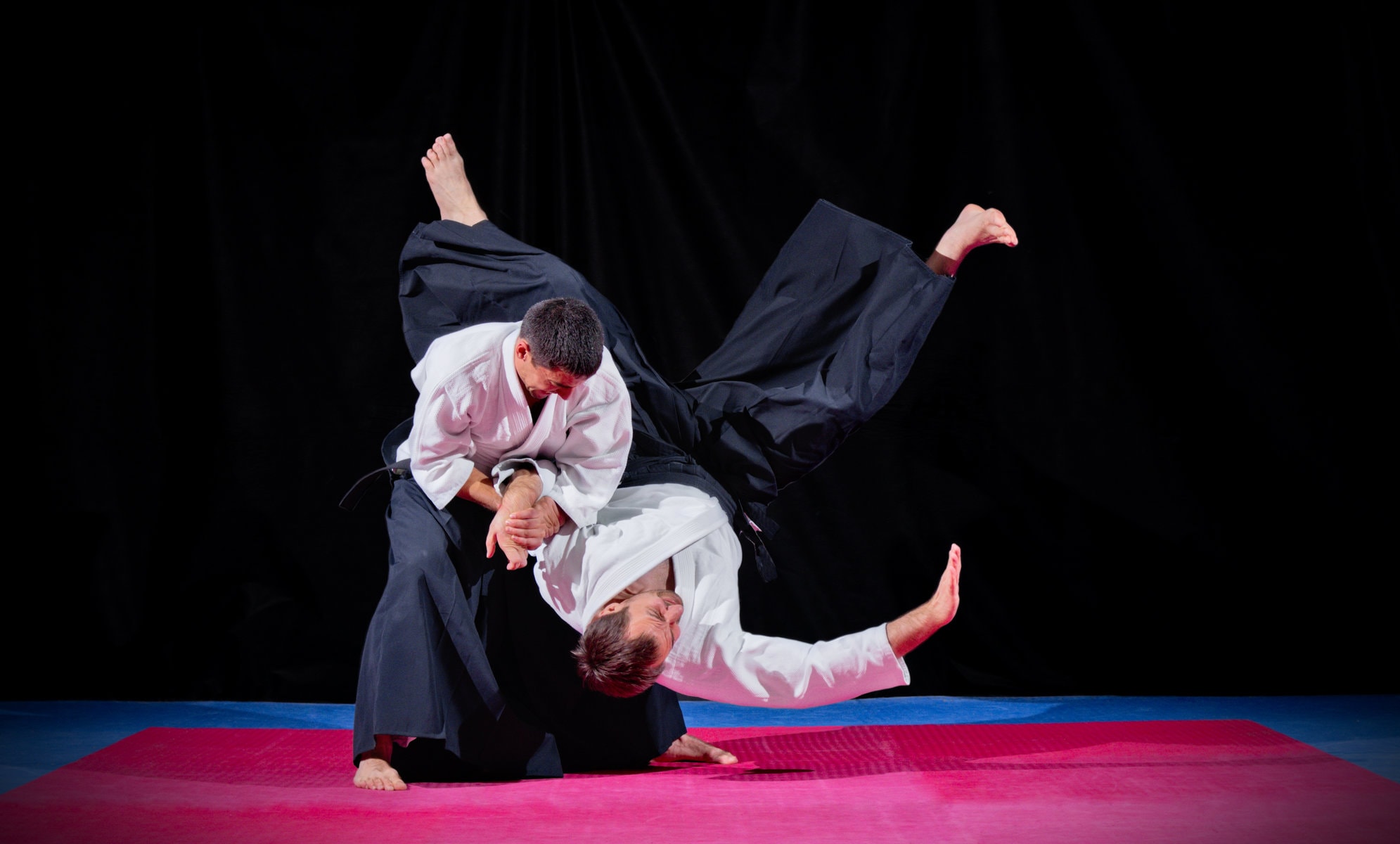
Similar to karate, aikido is one of the key Japanese martial arts. But, unlike karate, aikido was only developed earlier last century. It is recognised as a more modern form of martial arts.
Its core principles are non-aggression, non-resistance, and non-competitiveness. As such, you can expect your fellow students to steer away from engaging in frequent battles, but rather sharing the mutual goal of achieving personal growth at each individual’s own pace.
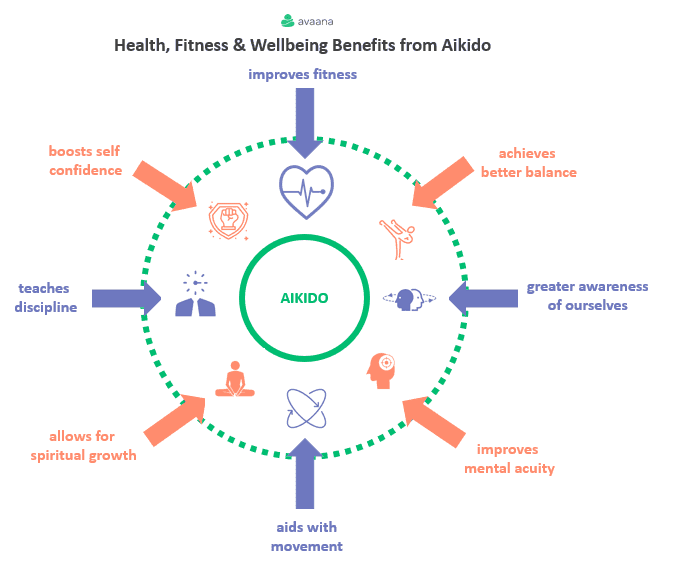
This Japanese martial art can be practiced by men, women, and children. If you are interested in practicing martial arts that can help you get physically fit, work on movement and self-defense, while also allowing for spiritual growth, then aikido is for you.
In fact, ‘aikido’ literally means ‘the way of harmony with the forces and principles of nature.’
3. Hapkido
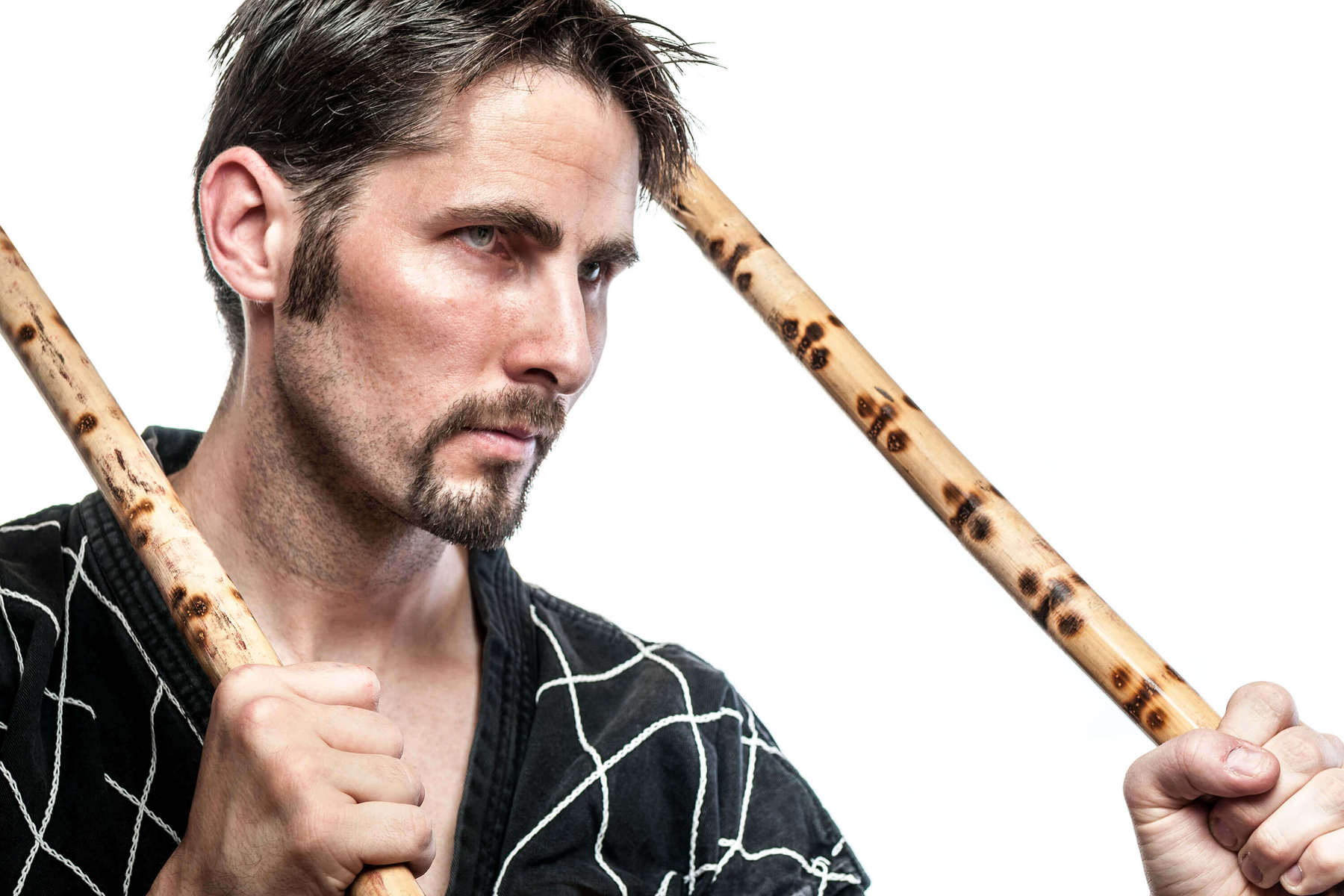
While hapkido appears similar to aikido, it is a different martial art form entirely.
Unlike its Japanese counterpart, Hapkido is a 2000-year-old Korean martial art. It employs circular, flowing movements and the natural flow of an opponent’s energy to subdue or overpower them.
To achieve peak effectiveness, a number of techniques are used to help students focus on energy originating from within. Pretty cool, right?
Aikido is a purely defensive martial art but Hapkido is considered a comprehensive martial art. This is because it has a strong focus on self-defense combined with strikes, throws, joint locks, kicks, immobilisation techniques, and weapons.
Weapons can include staffs, swords, canes, belts, and short sticks (dan bong).
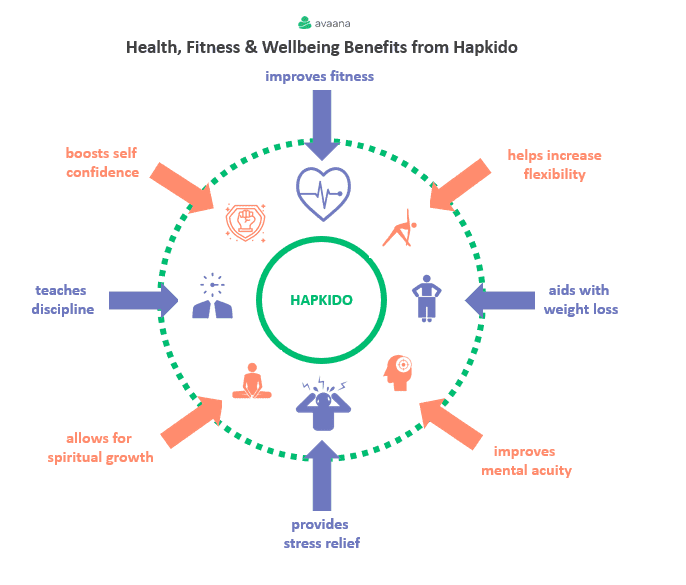
Hapkido incorporates over 270 movements and 3,400 techniques so it gives you a full-body workout.
It is suitable for adults and children alike with benefits that include weight loss, building endurance, and improving overall fitness.
Fun facts about Hapkido:
- The term hapkido translates to the “way of coordinated energy.”
- While hapkido can draw its roots thousands of years, Choi Yong-Sool and his students are widely viewed as the founders of modern hapkido.
4. Krav Maga

Krav maga is a mixed martial art form that involves a blend of techniques from karate, aikido, boxing, muay Thai, and judo… to name a few!
It is an Israeli martial art that is now used by military and armed forces around the world. In these environments, krav maga is viewed as one of the deadliest forms of martial arts to learn.
Krav maga is not a sport so classes are not competition-focused. Instead, the focus is on the application of self-defense techniques to real-life situations.
The aim is to couple an offensive move with a defensive one at each instance. This increases the impact that can be made, with the primary goal of neutralising the threat as quickly as possible.
An effective and powerful self-defense system, Krav maga can be used to fight off armed assailants and advances of sexual violence, for example.
As a martial art, it is not designed to look pretty. Rather, it is functional in nature.
Depending on the situation, this can include keeping you safe and protecting your loved ones in moments of danger.
In a class situation, Krav maga can be undertaken by anyone, no matter their age, fitness level, size, or strength.

5. Capoeira
While the exact history is disputed, one supported origin story is that capoeira (kapu-air-ah) was developed by Africans brought to Brazil as slaves. They developed the 500-year-old fighting techniques as a means of self-defense and protection from their slave masters.
It’s believed that the Africans’ fighting moves were disguised by being combined with music, dance, acrobatics, and rituals.
This allowed them to practice their martial art form without detection by the slave masters. A rather smart approach to take, wouldn’t you say?

If you want to start martial arts classes but don’t like the sound of more traditional forms, capoeira is for you.
Capoeira has evolved over the years but it remains one of the best martial arts, in part due to its beauty and grace of movement.
There are two main styles of capoeira. These are:
These two forms do have certain similarities, the former is more closely aligned with its African roots with slower movements close to the ground.
The latter form, Capoeira Regional, is a more modern style developed in the 1930s. It involves faster movements and capoeiristas standing tall. Some schools teach both styles. In this case, they refer to their contemporary style as Capoeira Contemporânea.
No previous martial arts, dance, or gymnastics experience is required to enroll in a capoeira class. With this in mind, capoeira is technically suitable for everyone.
Word of warning, though: it can be physically demanding!
Fun facts about Capoeira:
- Instrumental music, group chanting, and singing often appear within the practice of capoeira.
- Rhythmic musical instruments used in capoeira can include the jimbe and berimbau.
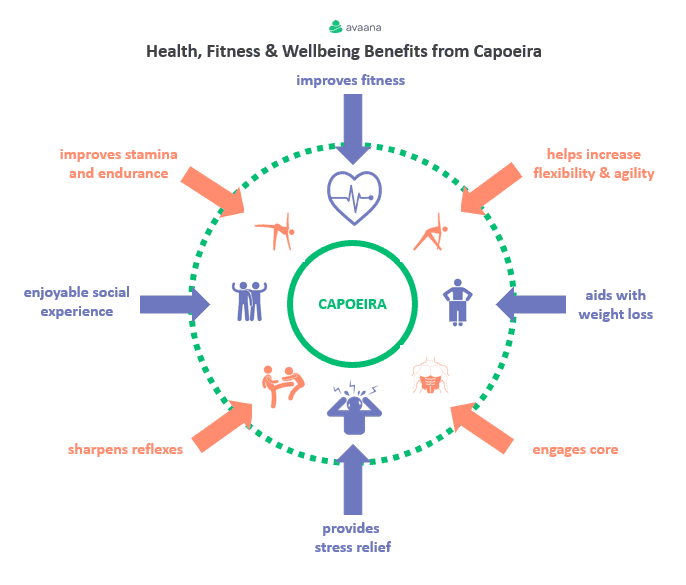
6. Ninjutsu Forms
Our dark horse today when compared to the other 5 forms, Ninjutsu or Ninpo, is a shadowy martial art that once again originates from Japan.
While Ninjutsu draws its lineages back over a thousand years, modern Ninjutsu has only started to emerge within the last century. The founder of this modernised branch is widely considered to be Masaaki Hatsumi who integrated the martial arts into his own international school.

Well known as the martial art form of the infamous ninja, Ninjutsu prides itself as being unconventional when compared to its peers, focusing on guerilla tactics and other survival methods to win or escape fights. Its recommended that those who learn leave their pride back home.
As a martial art, Ninjutsu prioritises survival, encouraging practitioners to maintain distance to their opponent through the learning of weapons and to even resort to surprise attacks for victory. This prioritisation on survival over strength, makes Ninjutsu well suited for people of all genders.
If you’re searching for a martial art that prioritises winning the fight through any means necessary, then Ninjutsu might be the best school for you.
Still want to do more?
While these are 6 of this year’s most popular types of martial arts, there are several other styles you might want to consider. Boxing and Jiu Jitsu are two of the other best forms of martial arts to try out.
Anyway, that’s probably enough information for today, so we’d like to thank you very much for stopping by!
If you’re looking for martial arts classes in Australian cities such as Melbourne, click here to start your search.
P.S. Here’s what the Avaana team recommends you check out next…
VIEW NEXT:
- Martial Arts for Beginners – Learn about the best forms of martial art for self-defense and what you’ll need to get started
- Four Revelations From Sports Physiology for Better Health – Know how to apply the key concepts of sports physiology to your own life
YOU’VE GOT OPTIONS!
- Register on Avaana for FREE – To receive relevant offers for health and wellbeing services that you can book in-person or online
- Download the Avaana app – In a matter of moments, you can compare, book (and save!) when searching for services and experiences
- Book a Martial Arts class today – Enter “Martial Arts” and your location in the search bar to get instant recommendations
Leave a Reply
You must be logged in to post a comment.




Hi DW
You missed Ninjutsu and several Kung Fu Tai Chi styles..??
cheers Sensei Shayne 34 years study of Bujinkan Ninjutsu